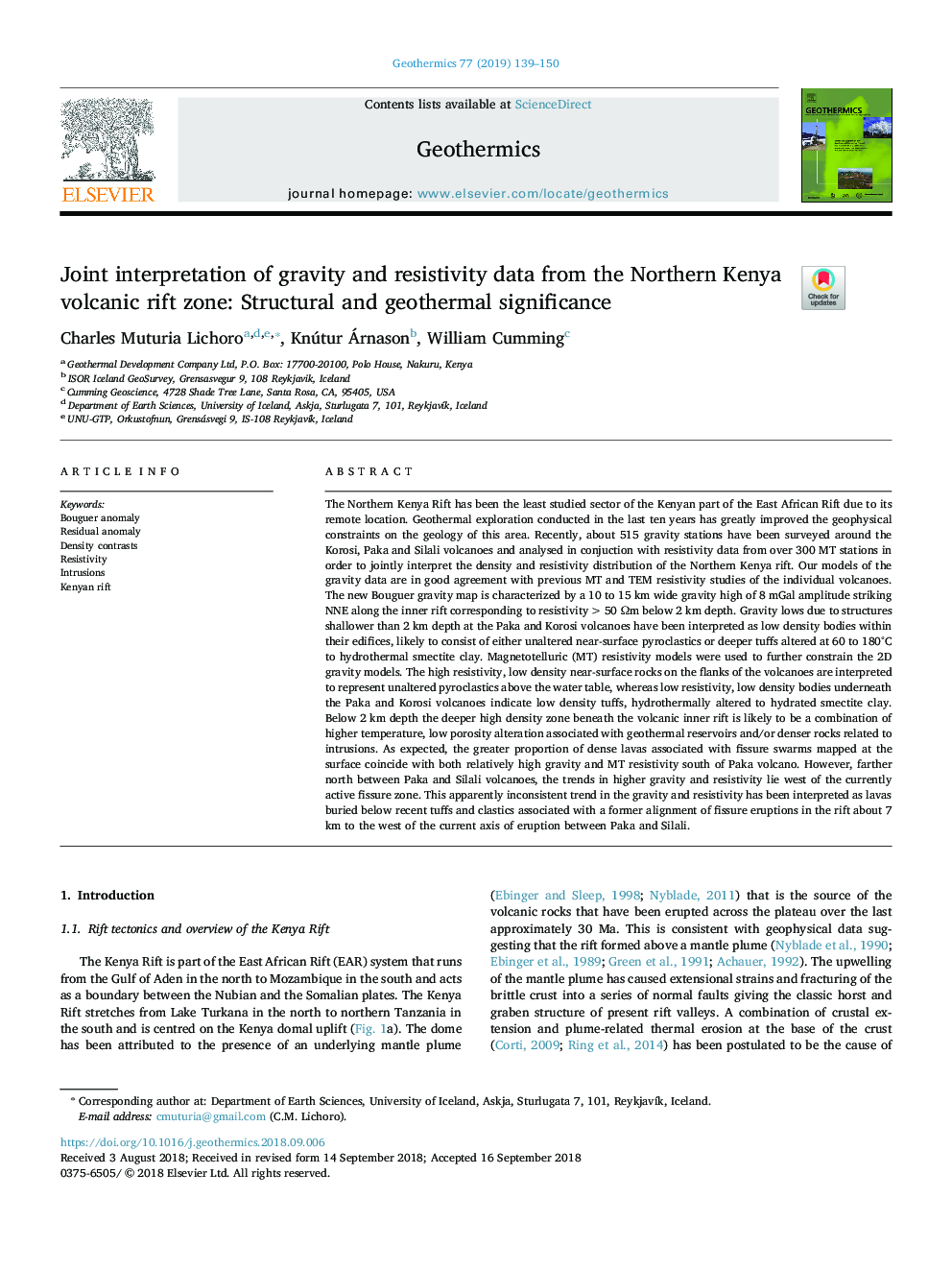| کد مقاله | کد نشریه | سال انتشار | مقاله انگلیسی | نسخه تمام متن |
|---|---|---|---|---|
| 11032115 | 1645683 | 2019 | 12 صفحه PDF | دانلود رایگان |
عنوان انگلیسی مقاله ISI
Joint interpretation of gravity and resistivity data from the Northern Kenya volcanic rift zone: Structural and geothermal significance
ترجمه فارسی عنوان
تفسیر مشترک داده های گرانش و مقاومت در منطقه شمال شبه آتشفشانی کنیا: اهمیت ساختاری و زمین شناسی
دانلود مقاله + سفارش ترجمه
دانلود مقاله ISI انگلیسی
رایگان برای ایرانیان
کلمات کلیدی
بیوگرافی بیوگرافی، ناهنجاری باقی مانده، تراکم کنتراست، مقاومت نفوذ، تقسیم کنیایی،
موضوعات مرتبط
مهندسی و علوم پایه
علوم زمین و سیارات
ژئوشیمی و پترولوژی
چکیده انگلیسی
The Northern Kenya Rift has been the least studied sector of the Kenyan part of the East African Rift due to its remote location. Geothermal exploration conducted in the last ten years has greatly improved the geophysical constraints on the geology of this area. Recently, about 515 gravity stations have been surveyed around the Korosi, Paka and Silali volcanoes and analysed in conjuction with resistivity data from over 300 MT stations in order to jointly interpret the density and resistivity distribution of the Northern Kenya rift. Our models of the gravity data are in good agreement with previous MT and TEM resistivity studies of the individual volcanoes. The new Bouguer gravity map is characterized by a 10 to 15 km wide gravity high of 8 mGal amplitude striking NNE along the inner rift corresponding to resistivity > 50 Ωm below 2 km depth. Gravity lows due to structures shallower than 2 km depth at the Paka and Korosi volcanoes have been interpreted as low density bodies within their edifices, likely to consist of either unaltered near-surface pyroclastics or deeper tuffs altered at 60 to 180°C to hydrothermal smectite clay. Magnetotelluric (MT) resistivity models were used to further constrain the 2D gravity models. The high resistivity, low density near-surface rocks on the flanks of the volcanoes are interpreted to represent unaltered pyroclastics above the water table, whereas low resistivity, low density bodies underneath the Paka and Korosi volcanoes indicate low density tuffs, hydrothermally altered to hydrated smectite clay. Below 2 km depth the deeper high density zone beneath the volcanic inner rift is likely to be a combination of higher temperature, low porosity alteration associated with geothermal reservoirs and/or denser rocks related to intrusions. As expected, the greater proportion of dense lavas associated with fissure swarms mapped at the surface coincide with both relatively high gravity and MT resistivity south of Paka volcano. However, farther north between Paka and Silali volcanoes, the trends in higher gravity and resistivity lie west of the currently active fissure zone. This apparently inconsistent trend in the gravity and resistivity has been interpreted as lavas buried below recent tuffs and clastics associated with a former alignment of fissure eruptions in the rift about 7 km to the west of the current axis of eruption between Paka and Silali.
ناشر
Database: Elsevier - ScienceDirect (ساینس دایرکت)
Journal: Geothermics - Volume 77, January 2019, Pages 139-150
Journal: Geothermics - Volume 77, January 2019, Pages 139-150
نویسندگان
Charles Muturia Lichoro, Knútur Árnason, William Cumming,
